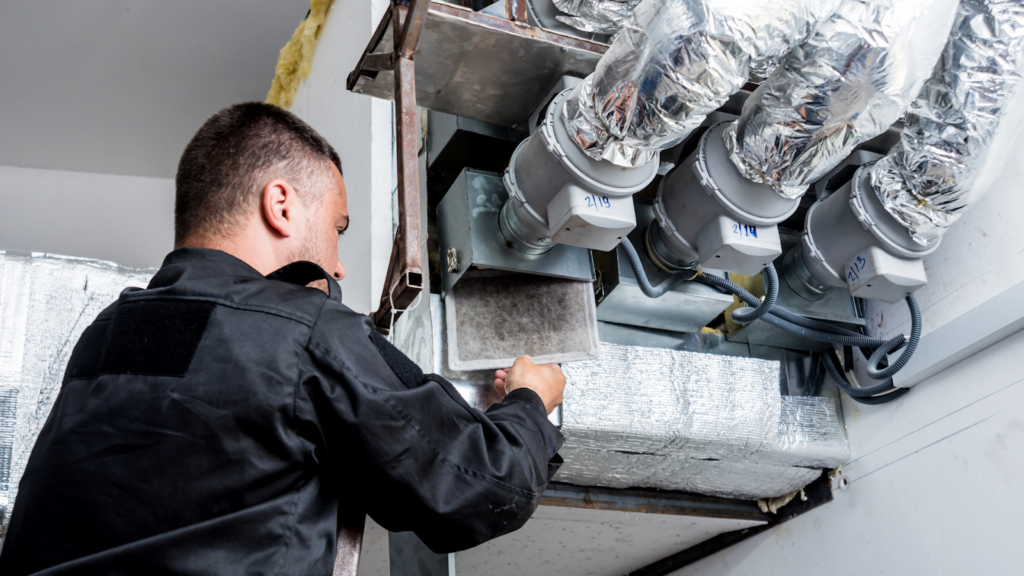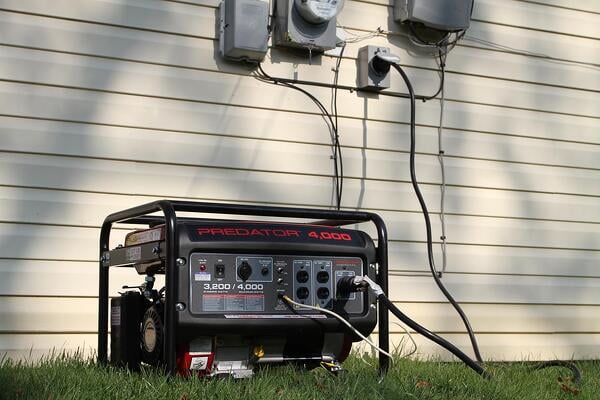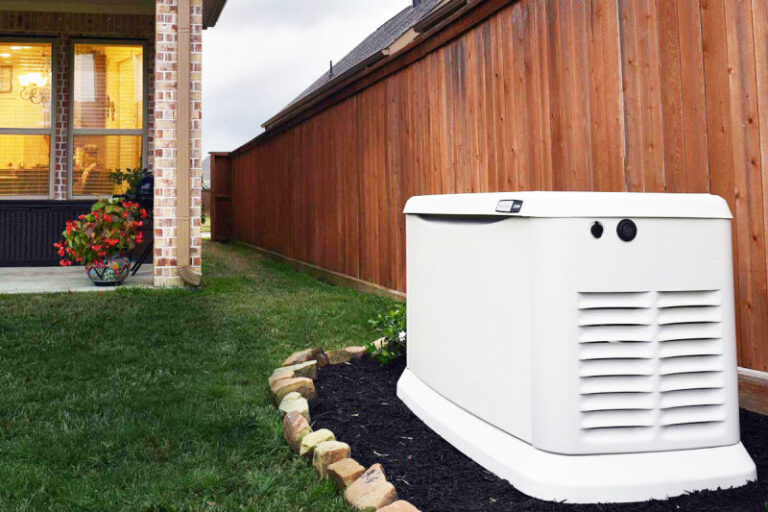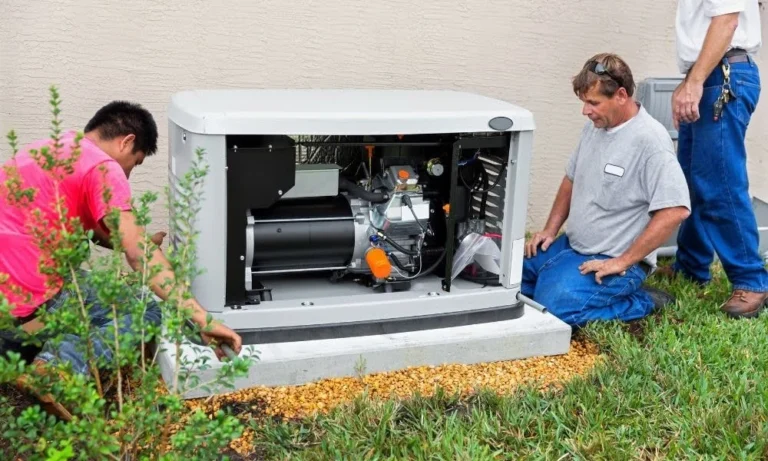A Comprehensive Guide on Installing a Generator Transfer Switch
Generator transfer switches play a crucial role in ensuring seamless power supply during power outages. These switches facilitate the smooth transition from the main power grid to a backup generator, preventing disruptions in electrical supply. Understanding the basics of transfer switches is fundamental before embarking on the installation process.
Importance of Having a Transfer Switch in a Power Outage Scenario
In the event of an outage, a generator transfer switch setup becomes indispensable. Without it, manually switching between the main power source and the generator can be not only inconvenient but also dangerous. A transfer switch automates this process, ensuring that power is transferred safely and efficiently, minimizing downtime and potential damage to appliances and electrical systems.
Safety Considerations Before Installation
Before diving into the installation process, it’s paramount to prioritize safety. Turning off the main power supply, understanding the electrical system, and using appropriate personal protective equipment are crucial steps. Additionally, ensuring compliance with local electrical codes and regulations is imperative to guarantee a safe and reliable transfer switch installation.
Understanding Generator Transfer Switches
Generator transfer switches are essential components in backup power systems, serving as the link between the main electrical grid and a standby generator. Their primary function is to seamlessly manage the transition of power during power outages, ensuring a reliable and uninterrupted electricity supply to homes and businesses. These switches play a critical role in preventing backfeeding, a potentially hazardous situation where electricity from the generator flows back into the grid.
Types of Transfer Switches
Manual Transfer Switches
Manual transfer switches require manual intervention to transfer electric power between the main grid and the generator. While more economical, they rely on the user to initiate the switch during an outage. Manual switches are suitable for applications where immediate power transfer is not critical, providing a cost-effective solution for backup electric power needs.
Automatic Transfer Switches
Automatic transfer switches, on the other hand, offer a more advanced and hands-free solution. These switches can detect outages and automatically initiate the switch to the generator. Ideal for scenarios where seamless, uninterrupted power is crucial, automatic transfer switches are commonly found in critical facilities such as hospitals, data centers, and emergency services.
Planning for Installation
Assessing Power Needs
Before embarking on the installation of a generator transfer switch, a thorough assessment of your power needs is essential. Consider the appliances and systems you want to power during an outage. This evaluation will guide the selection of an appropriately sized transfer switch to handle the load efficiently.
Choosing an Appropriate Transfer Switch Size
Selecting the right size for your transfer switch is critical for optimal performance. Undersized switches can lead to overloading and potential damage, while oversized ones may result in inefficient energy utilization. Consult with a professional or refer to the power requirements of your appliances to determine the appropriate size for your transfer switch.
Required Tools and Materials
Gather the necessary tools and materials before starting the installation process. Basic items include screwdrivers, wire strippers, pliers, and a voltage tester. Ensure you have the correct gauge of wiring, conduit, and electrical boxes to meet local building codes. Safety equipment such as gloves and safety glasses is also crucial to protect yourself during the installation.
Compliance and Regulations
Understanding Local Building Codes
Before diving into the installation of a generator transfer switch, it is crucial to be well-versed in local building codes. These codes vary from one jurisdiction to another and outline specific requirements for electrical installations. Ensure that your transfer switch installation complies with these codes to guarantee the safety and legality of your electrical system.
Compliance with National Electric Code (NEC)
The National Electric Code (NEC) provides standardized guidelines for electrical installations across the United States. Adhering to the NEC is not only a best practice but often a legal requirement. Familiarize yourself with the relevant NEC sections pertaining to transfer switch installations to ensure that your project aligns with national standards for electrical safety.
Obtaining Necessary Permits
Securing the required permits is a crucial step in compliance with local regulations. Check with your local building department to determine the specific permits needed for your transfer switch installation. Acquiring permits not only ensures that your project is legal but also allows for inspections, providing an additional layer of safety and quality assurance.
Switch Types and Their Features
Manual Transfer Switch Features
Manual transfer switches come with a set of features that make them a practical choice for certain applications. These switches are typically more affordable and straightforward to install a transfer. Features may include a mechanical interlock to prevent both the generator and the utility power from being on simultaneously, providing an added layer of safety.
Automatic Transfer Switch Features
Automatic transfer switches offer a higher level of convenience and automation. These switches often come equipped with advanced features such as automatic startup and shutdown of the generator, load shedding capabilities to manage heavy loads, and self-testing to ensure readiness. The seamless transition they provide during outages makes them an attractive choice for those seeking a hands-free solution.
Pros and Cons of Each Type
Manual Transfer Switch
Pros: Cost-effective, simple installation, manual control.
Cons: Requires manual intervention, may lead to a brief power interruption during switch-over.
Automatic Transfer Switch
Pros: Automatic operation, seamless transition, advanced features.
Cons: Higher cost, more complex installation, dependency on electronic components.
Understanding the features and pros and cons of each transfer switch type allows you to make an informed decision based on your specific needs and preferences. Whether opting for manual or automatic, compliance with regulations ensures a safe and legally sound installation.
Pre-Installation Steps
Turning off Main Power Supply
Safety is paramount when working with electrical systems. Before you begin installing transfer switch, ensure to turn off the main supply to your home or facility. This step prevents the risk of electrical shocks and ensures a secure environment for the installation process.
Ensuring Generator Readiness
Verify that your generator is in good working condition and ready for operation. Check the fuel level, oil level, and any other essential components. Regular maintenance and testing of the generator guarantee its reliability when called upon during an outage.
Securing a Suitable Location for the Transfer Switch
Identify and prepare a suitable location for the transfer switch, considering factors such as accessibility, ventilation, and environmental conditions, to ensure optimal performance when provided power is needed.
The chosen location should be easily accessible, well-ventilated, and away from direct sunlight or extreme temperatures. Ensure that the site allows for convenient wiring connections and complies with local building codes, providing a secure and efficient setup for the transfer switch when it comes to routing provided power during outages.

Installation Process
Mounting the Transfer Switch
Securely mount the transfer box switch in the designated location following the manufacturer’s instructions for proper mounting, especially when considering how to install a generator transfer switch.
Take into account factors like orientation and clearance during the installation process. A well-mounted transfer switch ensures stability and accessibility for future maintenance, contributing to the overall reliability and longevity of the generator backup system.
Connecting Wires and Cables
Carefully connect the wires and cables according to the provided schematics and guidelines. Use the appropriate tools to strip and terminate wires correctly. Take note of the color-coded wiring to avoid errors. Precision during this step is crucial for the efficient and safe operation of the transfer switch.
Grounding Considerations
Proper grounding is essential for the safety and functionality of the transfer switch. Connect the grounding wire according to local regulations and the manufacturer’s instructions. Grounding helps dissipate excess electrical energy and prevents potential electrical hazards.
Testing and Quality Assurance
Conducting a System Test
After the installation is complete, perform a comprehensive system test. Activate the transfer switch and observe the transition from the main supply to the generator. Confirm that the generator starts and supplies power seamlessly. Testing ensures that the system functions as intended during an actual power outage.
Verifying Proper Connections
Carefully inspect all connections to ensure they are secure and correctly made, providing a reliable pathway to provide power during outages. Check for any loose wires, exposed conductors, or signs of overheating.
Verifying proper connections is crucial for the long-term reliability of the transfer box switch and the safety of your electrical system, particularly when it comes to seamlessly providing generator power from the generator.
Addressing Common Installation Issues
During the testing phase, be vigilant for any issues that may arise, including common problems such as wiring errors, faulty connections, or issues with the generator, as well as potential problems related to power lines. Address any identified issues promptly to avoid disruptions during an actual outage.
Regular maintenance and proactive resolution of issues contribute to a reliable backup power system, ensuring the integrity of not only the internal components but also the connections to external power lines.
Integration with Home Electrical System
Connecting to the Main Electrical Panel
Integrating the transfer switch with the main electrical panel is a critical step for seamless functionality. Carefully follow the manufacturer’s guidelines and local electrical codes when making connections. This ensures that the transfer switch can effectively manage the flow of electricity between the main power supply and the generator.
Ensuring Seamless Transition During Power Outage
The primary purpose of a generator transfer switch is to provide a smooth transition from the main power supply to the generator during an outage, ensuring uninterrupted power supply and addressing fluctuations in power consumption. Verify that the switch is configured correctly to automatically detect power loss and activate the generator promptly. This guarantees a seamless response to change, maintaining a stable power supply to your home or business.
Synchronizing with Generator Operations
Coordinate the settings of the transfer switch with the operations of the generator. Ensure that the switch synchronizes seamlessly with the generator’s startup and shutdown procedures. Proper synchronization contributes to the overall efficiency and reliability of the backup power system.
Maintenance Guidelines
Regular Inspection of Transfer Switch Components
Perform routine inspections of the transfer switch components to identify any signs of wear, damage, or corrosion. Check for loose connections and ensure that all components are securely in place. Regular inspections contribute to the longevity of the transfer switch and prevent potential issues.
Addressing Wear and Tear Issues
Over time, transfer switches may experience wear and tear due to continuous use. Address any issues promptly, replacing worn-out components or damaged parts. Regular maintenance reduces the risk of unexpected failures and ensures that the installing transfer switch remains in optimal condition.
Recommended Maintenance Schedule
Establish a regular maintenance schedule for your transfer switch based on the manufacturer’s recommendations and usage patterns. Routine checks, cleaning, and lubrication, if required, should be part of the maintenance routine. Following a schedule ensures that your installing transfer switch is always ready to perform when needed.
Troubleshooting Common Problems
Identifying and Fixing Switch Malfunctions
In the event of switch malfunctions, promptly identify the issue and address it to restore power. Common problems may include faulty circuitry, damaged components, or issues with the control mechanism. A systematic approach to troubleshooting allows for quick resolution and minimizes downtime during outages.
Dealing with Power Transfer Issues
If you encounter problems with the transfer of power between the main supply and the generator, investigate potential causes such as wiring issues, relay malfunctions, or generator problems. Understanding the system’s components and their interactions is crucial for effective troubleshooting.
Seeking Professional Assistance When Needed
While many maintenance tasks and troubleshooting procedures can be performed by homeowners, some issues may require professional expertise. If you encounter challenges that exceed your knowledge or capabilities, seeking assistance from a qualified electrician or technician ensures that the transfer switch is properly diagnosed and repaired.
By integrating the transfer switch seamlessly into your home’s electrical system, following maintenance guidelines, and troubleshooting common problems effectively, you can rely on a robust backup power solution that provides continuous electricity during outages. Regular attention to the transfer switch ensures its longevity and the reliability of your backup power system.
Safety Measures During Operation
Operating a generator transfer switch correctly is crucial for the safety and reliability of your electrical system, especially when transitioning between the generator and the utility power source. Proper operation ensures a seamless transition between these power sources, minimizing the risk of electrical issues, damage to appliances, and potential hazards. Understanding the functionalities of the transfer switch, including its interactions with the utility power source, and following recommended procedures contribute to a safe and efficient operation.
Dealing with Emergency Situations
In emergency situations, it’s crucial to be well-versed in the proper response procedures, including emergency shutdown protocols for both the generator and the transfer switch, while also considering the restoration of utility power. Clear communication and a comprehensive understanding of these procedures are paramount for a swift and safe response in critical situations, preventing accidents and mitigating potential damage.
Preventive Measures for Long-Term Safety
Implementing preventive measures is key to ensuring long-term safety during the operation of a generator transfer switch. Regularly inspect the system for signs of wear, loose connections, or any abnormalities. Keep the surrounding area clean and free from obstructions, and ensure that all safety features, such as interlocks and grounding, are functioning correctly.
Summary
Understanding generator transfer switches, from installation to maintenance, is vital for a dependable backup power system. Proper installation, following local codes, is crucial for safety and optimal performance. While DIY may be tempting, professional installation is strongly recommended to reduce electrical hazards. Regular maintenance, including inspections and testing, ensures longevity and seamless functionality during power outages, emphasizing the importance of a proactive approach for reliability and safety.








